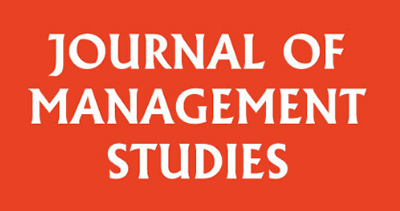
As artificial intelligence (AI) continues to reshape industries, firms must strategically navigate the opportunities and risks it presents. Our recent study published in the Journal of Management Studies explores how firms can effectively capitalize on the knowledge resources accessible through board interlocks while managing the uncertainties of technological disruption.
The Dual Role of Boards in AI Adoption
Directors play a pivotal role in steering firms through the adoption of disruptive technologies like AI. Boards are not only responsible for traditional governance and risk oversight, but increasingly involved in strategic decision-making and innovation. The diversity and breadth of a board’s network ties are critical in this context, particular those to other industries from which directors can gain technical and practical knowledge of new developments. Our study highlights that firms with heterogeneous board networks—those with directors connected to multiple industries—can access a wealth of diverse market intelligence, which can be a significant asset in strategic decision-making.
Balancing Innovation and Risk Management
One of the key insights from our research is the delicate balance firms must strike between leveraging AI for innovation and managing the associated risks. While AI exposure generally reduces idiosyncratic risk (IR) by signaling to investors that a firm is proactive in embracing technological advancements, the benefits of a diverse board network can vary. In the most technologically advanced industries, where firms’ exposure to AI is highest, having a highly heterogeneous board network can paradoxically increase IR as it may signal to investors that the firm is spreading its focus too thinly and exploring beyond its core competencies.
Strategic Utilization of Firm—Market Signals in the Age of AI
To navigate this complexity, firms need to intentionally develop and communicate their board networks and corporate strategy. Our study suggests several key factors:
- Cultivating Targeted Diversity: While board heterogeneity offers valuable insights and external information, it’s crucial to balance this with a focus on industry-specific expertise. Ensuring that the board includes members with deep knowledge of the firm’s primary industry can mitigate the perceived risks associated with diverse network ties.
- Leveraging Inter-Industry Insights: Directors with ties to multiple industries can bring innovative perspectives that drive AI adoption in ways that are aligned with the firm’s core strengths. Being aware of the risks, directors can strategically utilize their inter-industry knowledge sharing to foster innovative yet focused AI strategies.
- Strategic Communication: Firms must effectively communicate their strategic intent and the role of their board’s diverse knowledge networks to investors. Clear communication can help mitigate any negative perceptions by highlighting how these networks enhance the firm’s strategic capabilities and risk management processes.
- Emphasizing Core Competence Through Diversification: Our study suggests that diversification can serve as a buffer against the increased IR associated with high AI exposure and board network heterogeneity. Diversified operations across multiple business segments act as a signal to investors of the broad-based competence necessary to explore beyond the firm’s core competence, reducing market penalties.
Practical Implications for Directors and Executives
For directors and senior executives, the findings underscore the importance of strategic foresight and communication. Here are some actionable takeaways:
- Evaluating and Optimizing Board Composition: Regularly assess the composition of the board to ensure an optimal mix of industry-specific and cross-industry expertise. This balance can maximize the strategic value of board interlocks while managing risk perceptions.
- Balancing Tensions in Board-Level Decisions: Directors can mitigate the tensions between their dual responsibilities through other corporate-level decisions that shape market perceptions. Particularly, diversification allows firms to simultaneously leverage AI opportunities and diverse knowledge networks while signaling competence across multiple domains.
- Targeting Investor Relations Strategy: Enhance investor relations by clearly articulating the strategic benefits of board network heterogeneity and diversification. Transparent communication about how the firm leverages these aspects can build investor confidence and reduce perceived risks.
Our study offers crucial insights into how firms can harness board interlocks to navigate the complexities of AI adoption and technological disruption. By purposefully leveraging diverse knowledge networks and communicating their strategic intent effectively, firms can capitalize on AI’s opportunities while managing the associated risks. This balanced approach is essential for maintaining competitive advantage and fostering sustainable growth in an era of rapid technological change.
For a more detailed exploration of our research findings and practical strategies, we invite you to read our Open Access article in the Journal of Management Studies.

0 Comments